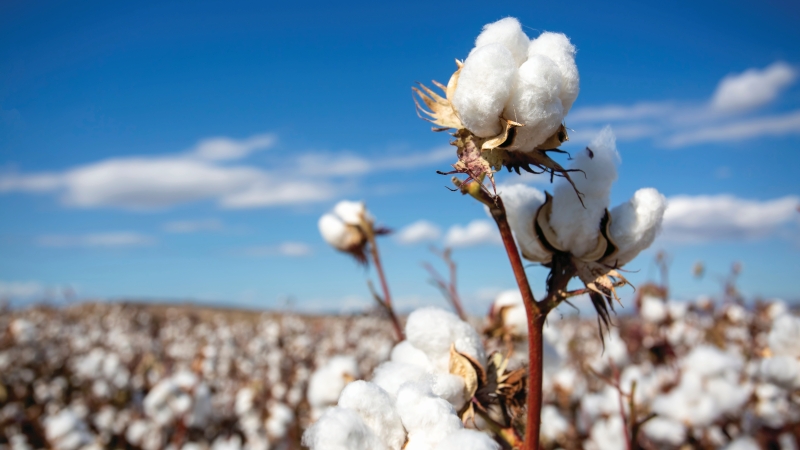Farming Through the Drought in Southeast Texas
Limited rainfall and severe heat adversely impacted early cotton development in Southeast Texas, according to growers attending the Bayer Field Day in Needville, TX, in mid-June.
“It has been rough,” says Brian Riendeau, who farms cotton and corn in Matagorda County. “We have been under an extreme drought, and the crops that may have done well last year may not be doing as well this year.”
The 2022 growing season for Texas farmers has been far from forgettable, with record-breaking high temperatures, a prolonged drought, and significant price increases for crop inputs. With such little rainfall, growers who can turned to irrigation to try and keep crops alive and growing.
“The ground has been so dry that the crops have essentially been starving for water,” says Brian Hlavinka from East Bernard, TX. “Fortunately, on our farm, we can irrigate about three-quarters of our cotton. However, not every farmer is able to irrigate, which can create a greater challenge for them.”
Texas cotton growers Brian Hlavinka and Brian Riendeau visit with Bayer Technical Agronomist Scott Stanislav (left) about new Deltapine brand cotton varieties at the Needville, TX, field day in June. (Photo: Kayla Powers)
Due to sustained high temperatures and limited rainfall in May, Hlavinka says crops faced a greater amount of stress this year than usual, and growers were faced with challenges to keep crops growing and healthy. Adequate irrigation allowed Hlavinka to establish a good root system in his cotton, but there was still a long way to go to get this cotton crop to harvest.
“The deeper my root system is, the longer I can sustain periods of drought like we are in right now,” Hlavinka says. “This is one of the main reasons why I believe the cotton crop looks as good as it does, considering all of the environmental stress we are under.”
Texas Extension Cotton Specialist Ben McKnight says about 90% of Texas is experiencing drought conditions, with Southeast Texas growers on the front line. He describes the 2022 growing season as vastly different from last year, with extraordinarily dry conditions this year compared to receiving an abundance of rainfall in 2021.
“Southeast Texas cotton growers had good moisture going into planting this year with isolated pockets of rain, but then quickly turned to dry conditions throughout the state,” McKnight says. “That area of Texas just hasn’t been catching very timely rains.”
McKnight discusses ways for farmers to continue being successful to round out this growing season, while encouraging growers to practice a cost-saving management style. He also emphasizes the importance of soil testing, as nitrogen fertilizer and other fluctuating input costs continue to increase.
“I have been encouraging folks to test their soil and determine any plant-available nitrogen in the soil profile that cotton can access,” McKnight says. “In many cases, if growers start to utilize that nitrogen, it can lead to a tremendous amount of cost savings on fertilizer input.”
There is no question that farmers have experienced a number of challenges this growing season. For Riendeau, the struggles are all part of farming cotton in Southeast Texas.
“Farming is tough,” Riendeau says. “I always tell my wife there are not many businesses that can handle the fluctuation in input costs, especially right now, and still survive. However, farmers are doing their absolute best to try to keep things going.”










